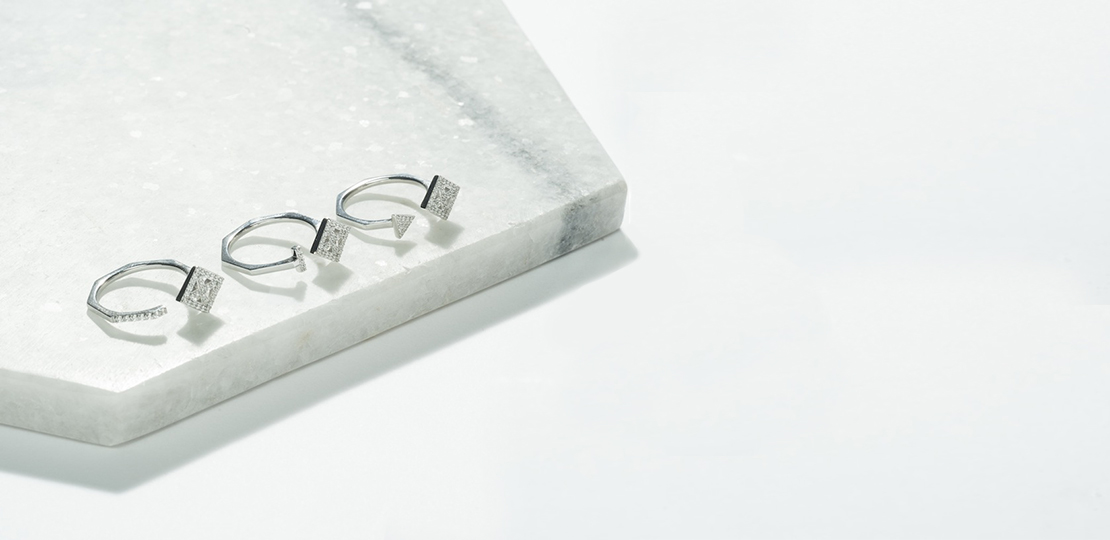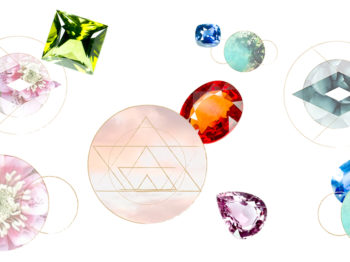The synthetic diamond, still very much unknown to the general public some three years ago, is today proudly (ac)claimed by a new generation of jewelry makers who only view creation through its impact on our planet. So, what if the synthetic diamond heralded tomorrow’s jewelry? We wanted to find out more about this stone which is attracting growing interest.
Stéphane Wulwik, founder of the eco-friendly jewelry brand Innocent Stone, shares his vision of this new market and its medium-term impact with us.
Discover the first part of this report with the interview of Jean Marc Lieberherr, CEO of the Diamond Producers Association.
TEIOFJ: After fifteen years’ experience as a diamond dealer, you created Innocent Stone in 2016, an eco-friendly jewelry brand which proposes synthetic diamonds exclusively. For what reasons? What do you find of particular interest with it?
SW: I discovered the synthetic diamond almost by chance. Back then, I thought that this stone was reserved for the electronics sector and certain industries which used it mainly for its optical properties. By taking a closer look at it, I realized that the synthetic diamond was not just beautiful and dazzling but that it actually offered a real alternative for traditional jewelry creation. And, I also had a burning desire to start a business. After 15 years trading natural diamonds, I felt the need to take on a new challenge. Innocent Stone was born out of this wish to invent tomorrow’s jewelry.
TEIOFJ: Your brand has existed for almost three years now. Have you noticed changes in the market? What sort of clientele do you attract?
SW: When I founded the brand in 2016, the synthetic diamond was just in its early stages. The first year of our business was devoted to ‘evangelizing’, in other words converting our partners and our customers. From the end of 2017, there was a real buzz around synthetic diamonds, driven by more global aspirations to consume ethically and eco-responsibly. We could really feel the impact of this on sales in France and abroad.
Today, Innocent Stone is directed at three types of customer: those interested by the price argument, as the synthetic diamond is between 40 to 50% cheaper than a natural diamond. Next up we have those who are sympathetic to our philosophy of advocating creation driven by ecological, ethical and social values. These are often our youngest customers. And lastly, an older clientele, passionate about new technologies and for whom the lab-grown diamond represents something extremely innovative and, as such, incredibly desirable.
TEIOFJ: As you mentioned prices, the Bain firm’s study states that like in any industrial process, thanks to technological advances, production costs will continue to decrease, making the synthetic diamond even more accessible. Do you think that the price difference will continue to widen?
SW: It’s still too early to know. The synthetic diamond market is a niche and it’s too early to make such forecasts with certainty. Yet, what is sure, however, is that the price of the natural diamond will continue to increase, because in about 20 or 30 years time, the main mines will be exhausted. This could lead to upwardly adjusting the value of the synthetic diamond.
It all depends how we analyze the market. If we apply the traditional schema wherein all technology, once it’s amortized, is accompanied by a decrease in production costs, then yes, we can expect price lowering. As far as I’m concerned, I tend to be of the view that we’re at the beginning of a totally new business driven by industrial groups which are still in a very important R&D phase. May I just remind you that, today, no laboratory is able to predict the type of stone which the machine will create. Innovation has not done away with this bit of mystery which makes every stone unique. Over the short term, I don’t think that the price gap will widen basically because it’s not in manufacturers’ interest to sell off their product.
TEIOFJ: What do you think of initiatives like the Lightbox one (a brand of the De Beers Group) where it chose not to certify its diamonds and, as such, to position them on a mass fashion market segment? Are you concerned that this may degrade the perceived value of synthetic diamonds?
SW: In my opinion, this is a pure marketing ploy even if it’s only natural that De Beers wants to defend its core market. In fact, it’s a really small production line, and hardly enough to meet the demands of their Lightbox clientele. Their communication isn’t really clear, the diamonds aren’t certified, all that is part and parcel of a desire to devalue the synthetic diamond market. But I’m not worried, it’s just an attempt among many others to contain a market which is beyond traditional jewelers.
TEIOFJ: What would you answer to those then who say that the synthetic diamond is not as eco-friendly as we’re led to believe and that its carbon footprint is high given its energy consumption?
SW: Yet again disinformation! Mining natural diamonds is energy-intensive, polluting and arduous for the men who work in the mines. The carbon footprint of a synthetic diamond is 1.5 billion times lower than that of a mined diamond. As for water consumption, it should be pointed out that a mined diamond requires 480 liters/carat whereas a lab-grown diamond consumes 70 liters/carat. These figures should make us stop and think about the choice we make for jewelry.
TEIOFJ: How do you see the market share between natural diamonds and synthetic ones in the coming years?
SW: I think that they’ll coexist because there’s room for both of them. The synthetic diamond is not the natural diamond’s enemy, they don’t target the same consumers and don’t address the same demand. Over the last few years, we’ve seen a new type of buyer arriving on the scene, one who is more aware and informed, who expects ethical jewelry. So, why, as a matter of principle, should we cut ourselves off from this clientele? That would be absurd! The synthetic diamond is a product that all jewelers should have in their store displays, on a par with the natural diamond. Of course, jewelers apprehend this because the synthetic diamond needs to be explained and defended, as does its actual name which is desperately lacking in glamor, but that’s another subject. I am personally convinced that the synthetic diamond will follow the same path as that of the cultured pearl, it’s just a question of time.




